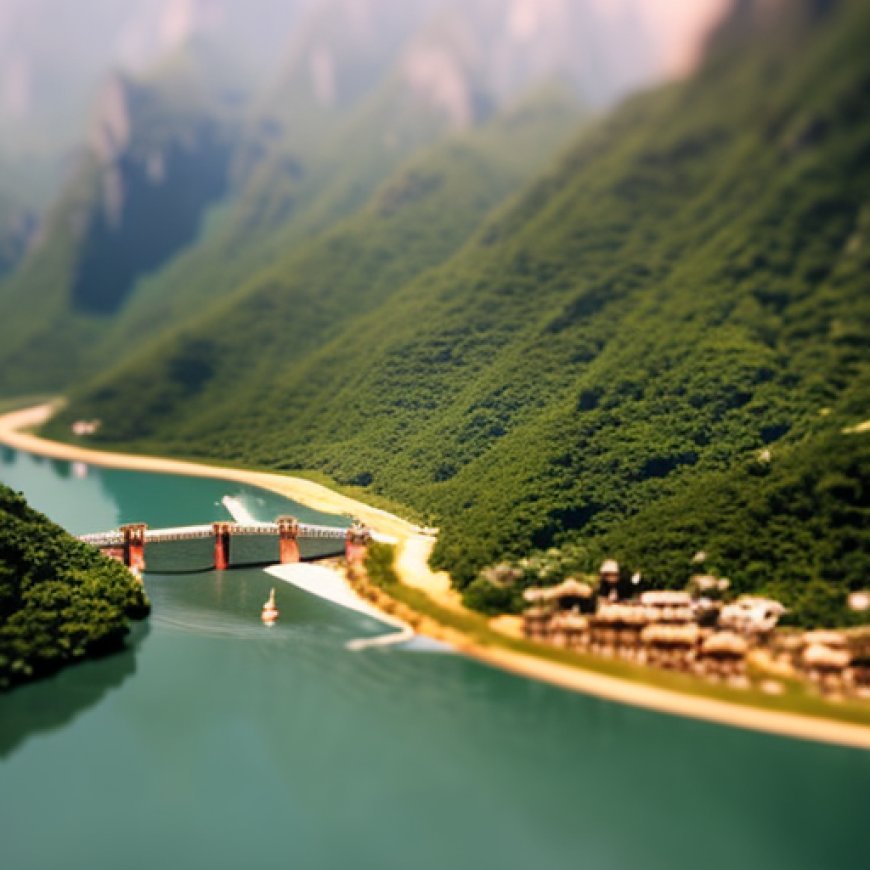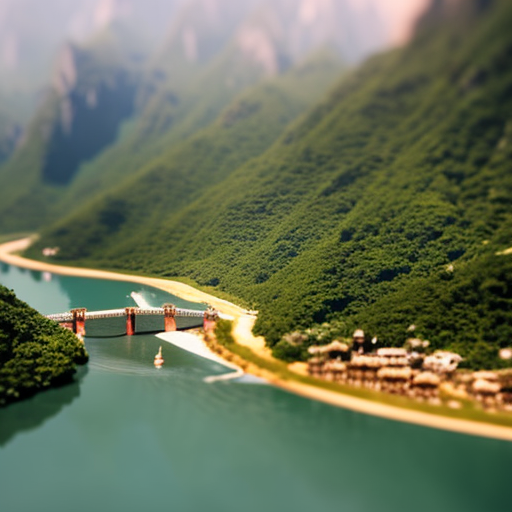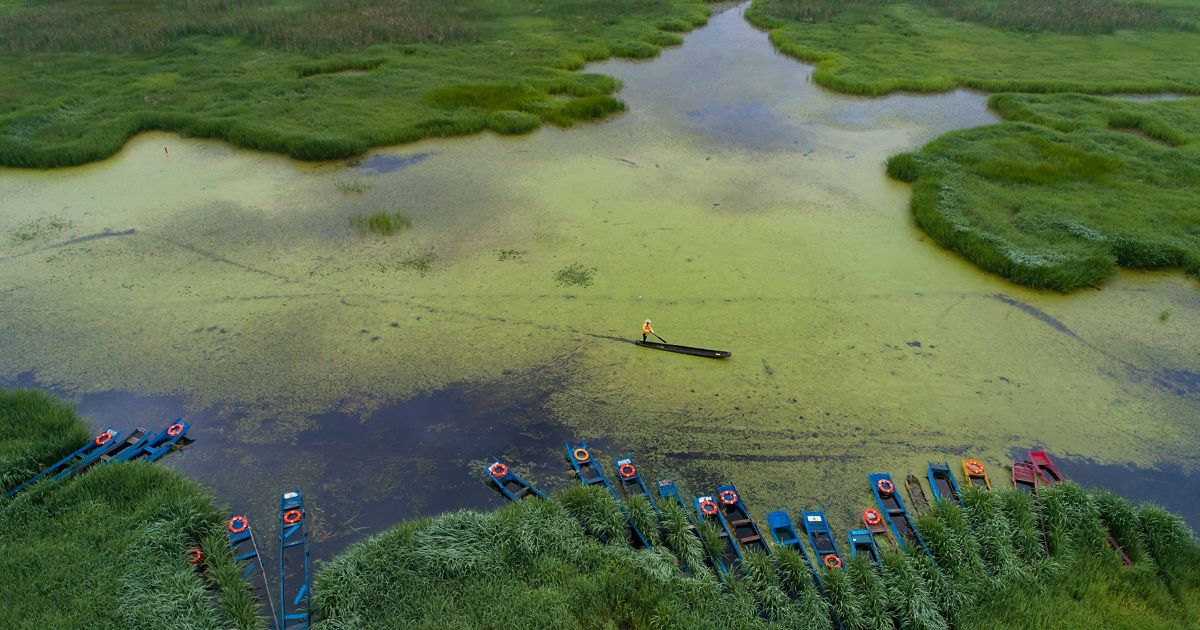Securing Freshwater in China
Securing Freshwater in China The Nature Conservancy



Healthy Rivers
In China, the freshwater ecosystem of the Yangtze River basin has been severely damaged due to high-intensity human activities such as dams and levees, water pollution, overfishing, channelization, sand mining, and quarrying. These activities have had a significant impact on the ecosystem, aquatic biodiversity, and fish resources in the region.
The Chinese government recognizes the urgent need to restore the Yangtze’s ecosystem and is committed to strengthening the protection and restoration of the ecological environment in the basin. This aligns with the Sustainable Development Goals (SDGs) set by the United Nations, particularly Goal 14: Life Below Water and Goal 15: Life on Land.
Conservation Efforts
Since 2005, TNC China has been working with partners to address the challenges faced by the Yangtze River. Conservation planning of priority areas has been completed, and key actions such as environmental flows of Three Gorges, fisheries monitoring, and evaluation along the Yangtze have been promoted.
However, there are still several challenges that need to be addressed. These include insufficient capacity of river managers, limited guidance on river restoration, and limited funding sources for scientific conservation and effective management of the freshwater ecosystem and biodiversity.
Partnerships and Policy Impacts
TNC China’s freshwater team is collaborating with partners to demonstrate best management practices in key tributaries at the upper Yangtze and key lakes and wetlands in the middle Yangtze River. The aim is to provide a freshwater toolkit and develop scaling-up mechanisms along the Yangtze through partnership and policy impacts.
By implementing these initiatives, TNC China aims to contribute to the achievement of the SDGs, particularly Goal 6: Clean Water and Sanitation, Goal 13: Climate Action, Goal 14: Life Below Water, and Goal 15: Life on Land.
SDGs, Targets, and Indicators
-
SDG 6: Clean Water and Sanitation
- Target 6.6: By 2020, protect and restore water-related ecosystems, including mountains, forests, wetlands, rivers, aquifers, and lakes.
- Indicator 6.6.1: Change in the extent of water-related ecosystems over time.
-
SDG 14: Life Below Water
- Target 14.2: By 2020, sustainably manage and protect marine and coastal ecosystems to avoid significant adverse impacts.
- Indicator 14.2.1: Proportion of national exclusive economic zones managed using ecosystem-based approaches.
-
SDG 15: Life on Land
- Target 15.1: By 2020, ensure the conservation, restoration, and sustainable use of terrestrial and inland freshwater ecosystems and their services.
- Indicator 15.1.1: Forest area as a proportion of total land area.
- Indicator 15.1.2: Proportion of important sites for terrestrial and freshwater biodiversity that are covered by protected areas.
The issues highlighted in the article are connected to multiple Sustainable Development Goals (SDGs). The main SDGs addressed are SDG 6 (Clean Water and Sanitation), SDG 14 (Life Below Water), and SDG 15 (Life on Land).
Based on the article’s content, specific targets under these SDGs can be identified:
-
Target 6.6: By 2020, protect and restore water-related ecosystems, including mountains, forests, wetlands, rivers, aquifers, and lakes.
The article mentions that the Chinese government is prioritizing the restoration of the Yangtze River basin’s ecosystem and working to strengthen the protection and restoration of the ecological environment in the area.
-
Target 14.2: By 2020, sustainably manage and protect marine and coastal ecosystems to avoid significant adverse impacts.
While the article focuses on freshwater ecosystems, it indirectly relates to the target by highlighting the need for protection and restoration of the Yangtze River basin’s aquatic biodiversity and fish resources.
-
Target 15.1: By 2020, ensure the conservation, restoration, and sustainable use of terrestrial and inland freshwater ecosystems and their services.
The article specifically mentions the need for conservation planning, protection, and restoration of key tributaries at the upper Yangtze and key lakes and wetlands in the middle Yangtze River. These actions align with the target of ensuring the conservation and restoration of terrestrial and inland freshwater ecosystems.
The article implies several indicators that can be used to measure progress towards the identified targets:
- Indicator 6.6.1: Change in the extent of water-related ecosystems over time. The article highlights the need for restoration and protection of the Yangtze River basin’s ecosystem, indicating a desire to reverse the damage caused by human activities.
- Indicator 14.2.1: Proportion of national exclusive economic zones managed using ecosystem-based approaches. Although the article does not directly mention economic zones, it emphasizes the importance of managing and protecting the aquatic biodiversity and fish resources of the Yangtze River basin.
- Indicator 15.1.1: Forest area as a proportion of total land area. While the article does not explicitly mention forests, it discusses conservation planning and best management practices in key tributaries and lakes, indicating a focus on preserving terrestrial ecosystems.
- Indicator 15.1.2: Proportion of important sites for terrestrial and freshwater biodiversity that are covered by protected areas. The article mentions the promotion of key actions such as fisheries monitoring and evaluation along the Yangtze, indicating efforts to protect important sites for biodiversity.
| SDGs | Targets | Indicators |
|---|---|---|
| SDG 6: Clean Water and Sanitation | Target 6.6: By 2020, protect and restore water-related ecosystems, including mountains, forests, wetlands, rivers, aquifers, and lakes. | Indicator 6.6.1: Change in the extent of water-related ecosystems over time. |
| SDG 14: Life Below Water | Target 14.2: By 2020, sustainably manage and protect marine and coastal ecosystems to avoid significant adverse impacts. | Indicator 14.2.1: Proportion of national exclusive economic zones managed using ecosystem-based approaches. |
| SDG 15: Life on Land | Target 15.1: By 2020, ensure the conservation, restoration, and sustainable use of terrestrial and inland freshwater ecosystems and their services. | Indicator 15.1.1: Forest area as a proportion of total land area. |
| Indicator 15.1.2: Proportion of important sites for terrestrial and freshwater biodiversity that are covered by protected areas. |
Behold! This splendid article springs forth from the wellspring of knowledge, shaped by a wondrous proprietary AI technology that delved into a vast ocean of data, illuminating the path towards the Sustainable Development Goals. Remember that all rights are reserved by SDG Investors LLC, empowering us to champion progress together.
Source: nature.org

Join us, as fellow seekers of change, on a transformative journey at https://sdgtalks.ai/welcome, where you can become a member and actively contribute to shaping a brighter future.







